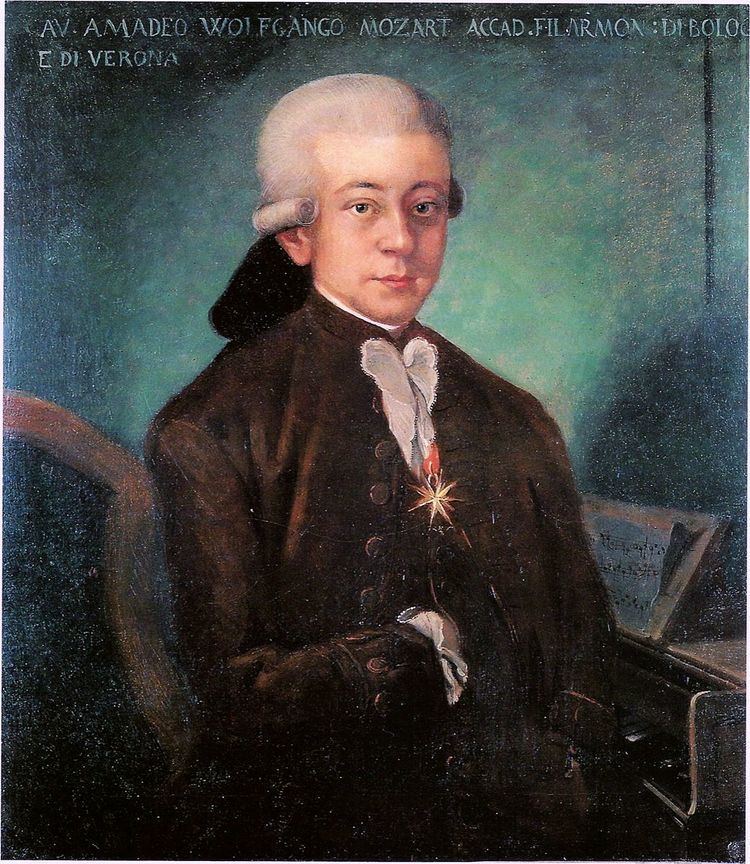Key E-flat major Composed 1779 (1779) | Catalogue K. 364 (320d) | |
 | ||
Movements Three (Allegro maestose, Andante, Presto) | ||
The Sinfonia Concertante for Violin, Viola and Orchestra in E-flat major, K. 364 (320d), was written by Wolfgang Amadeus Mozart.
Contents
At the time of its composition in 1779, Mozart was on a tour of Europe that included Mannheim and Paris. Mozart had been experimenting with the sinfonia concertante genre and this work can be considered his most successful realization in this cross-over genre between symphony and concerto.
Instrumentation
The piece is scored in three movements for solo violin, solo viola, two oboes, two horns, and strings, the latter including a divided viola section, which accounts for the work's rich harmony.
The solo viola part is written in D major instead of E flat major, and the instrument tuned a semitone sharper (scordatura technique), to give a more brilliant tone. This technique is uncommon when performed on the modern viola and is used mostly in performance on original instruments.
Movements
Recordings
Richard Wigmore in Gramophone October 2015 says there are over 40 CD recordings, of which 20 are listed. He rates as best to date one by Iona Brown, violinist and conductor, and Lars Anders Tomter, viola, with the Norwegian Chamber Orchestra, Chandos CHAN9695. Also on his "short list" is a 1989 recording, with Iona Brown, and with Nobuko Imai, viola.
Legacy
This Sinfonia Concertante has influenced many arrangers to use its themes. In 1808 an uncredited arrangement of the piece for string sextet Grande Sestetto Concertante was published by Sigmund Anton Steiner. All six parts are divided equally among the six players; it is not presented as soloists with accompaniment. It has also been arranged for cello in place of the viola part.
The Sinfonia Concertante was mentioned in William Styron's 1979 novel Sophie's Choice; after a stranger molests Sophie on the subway, she hears the Sinfonia Concertante on the radio, which brings back memories of her childhood in Kraków and snaps her out of her depression.
Variations on the slow second movement were used for the soundtrack to the 1988 Peter Greenaway film Drowning by Numbers by composer Michael Nyman. The original piece is also heard after each of the drownings in the screenplay.
The American composer and bassist Edgar Meyer was so interested in this work that in 1995 he wrote a double concerto for double bass, cello and orchestra that, while very different in style, closely mirrors the structure of Mozart's Sinfonia concertante.
The andante movement of this piece was featured in Nuri Bilge Ceylan's 2002 film Uzak.
The first movement of the piece was briefly heard in the 1984 movie "Amadeus".
